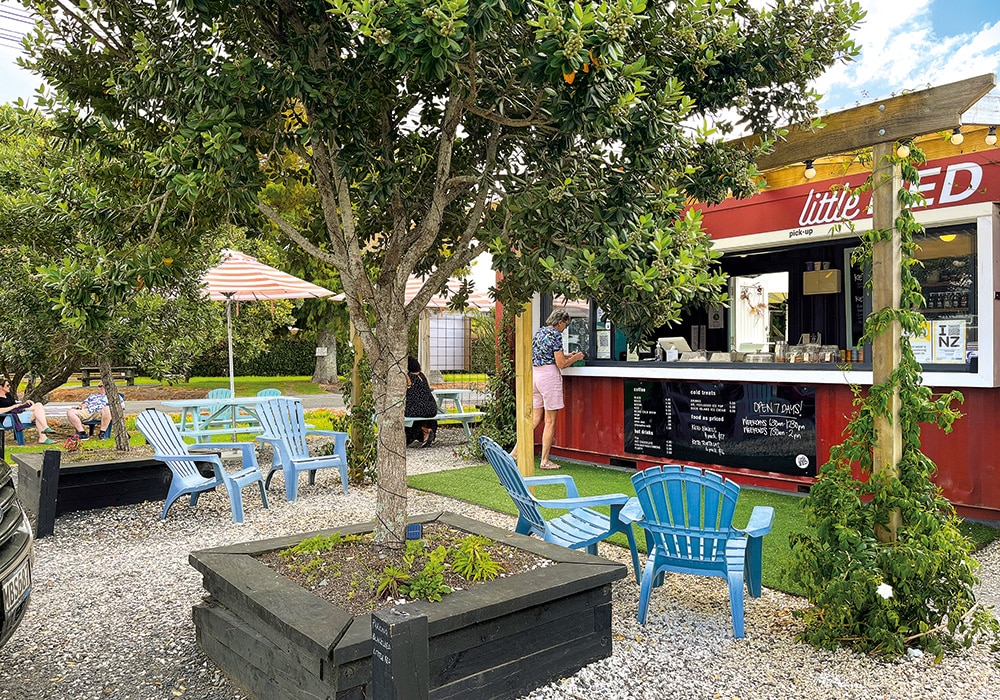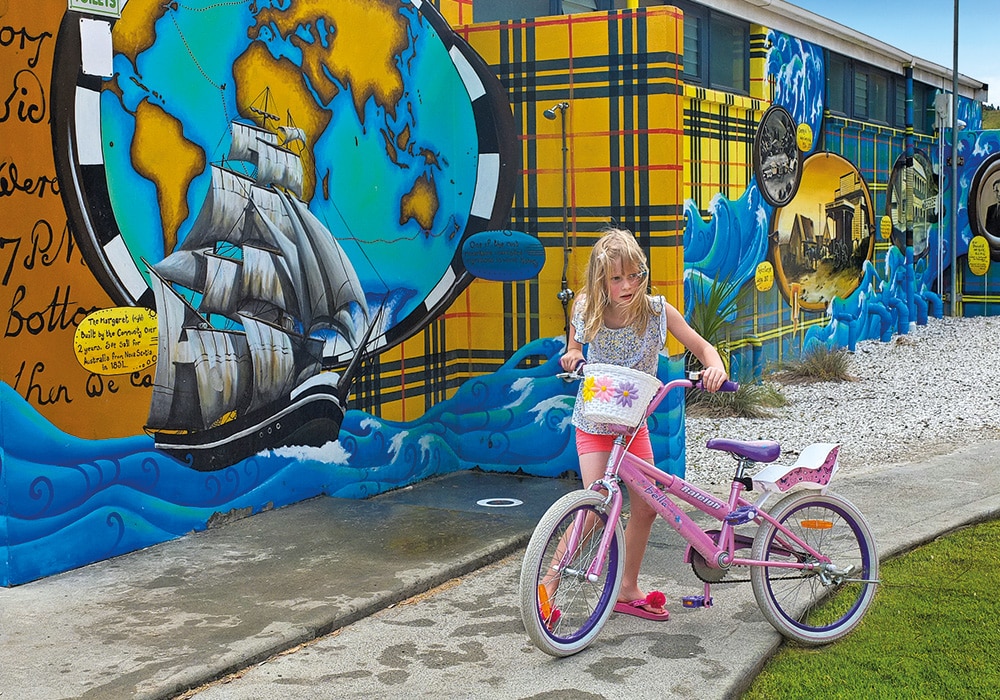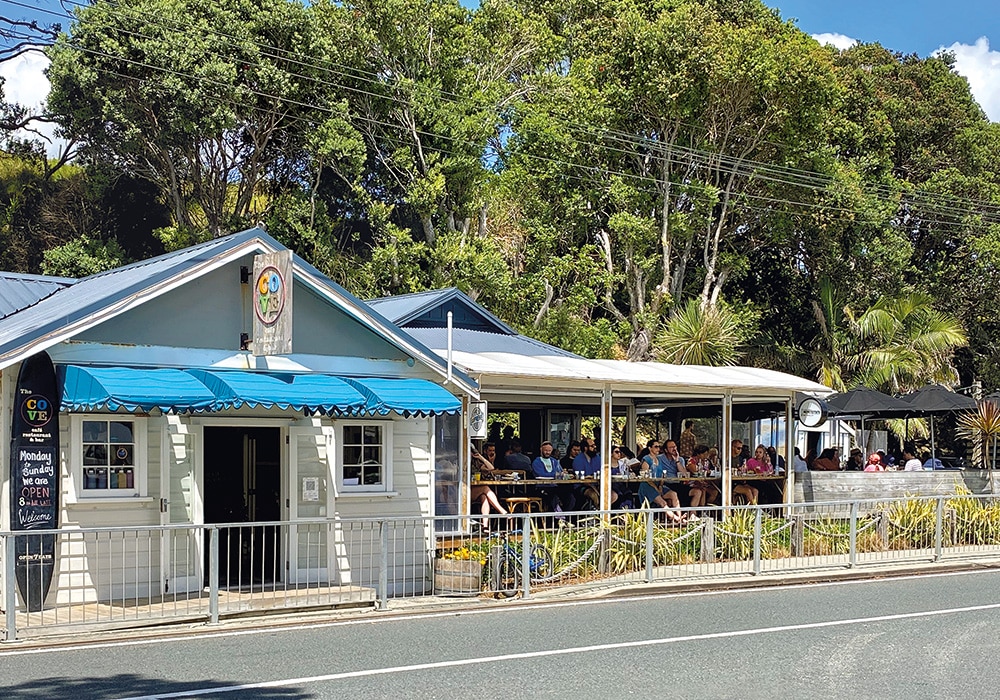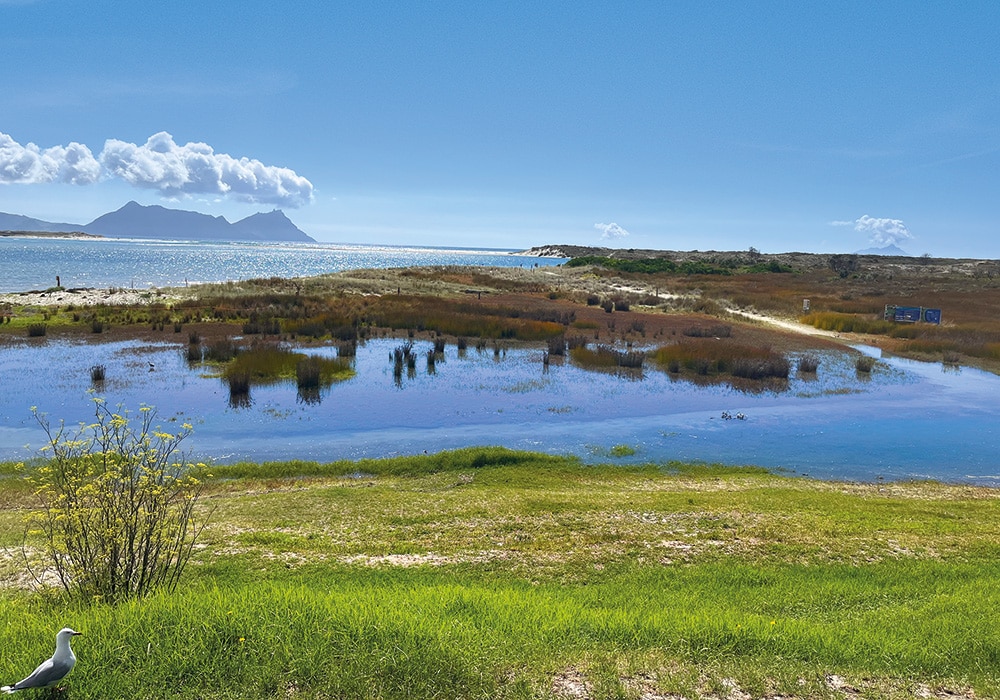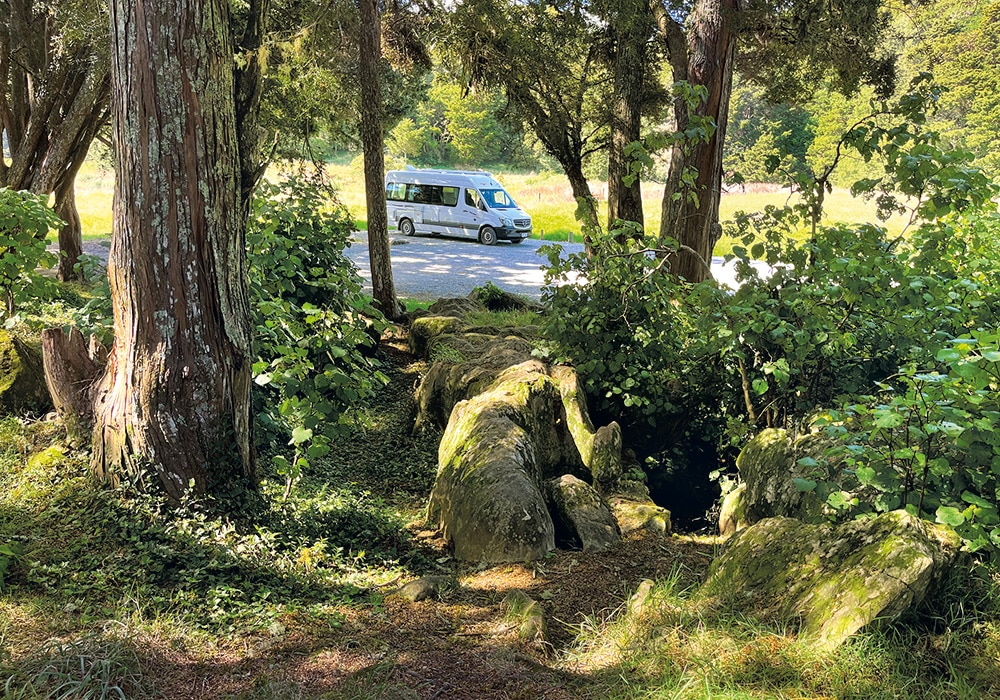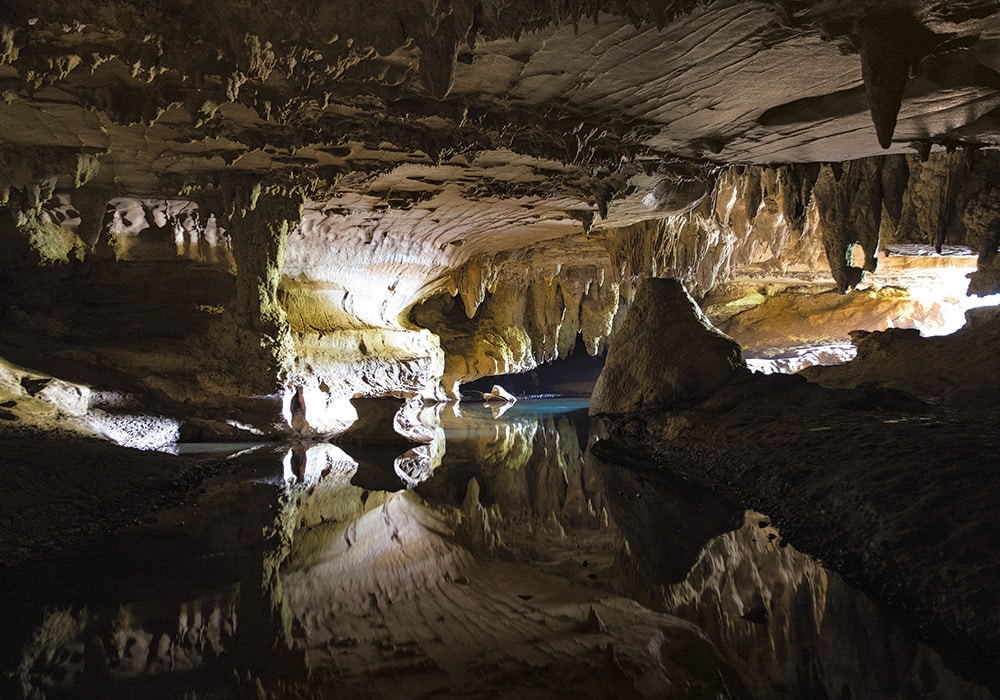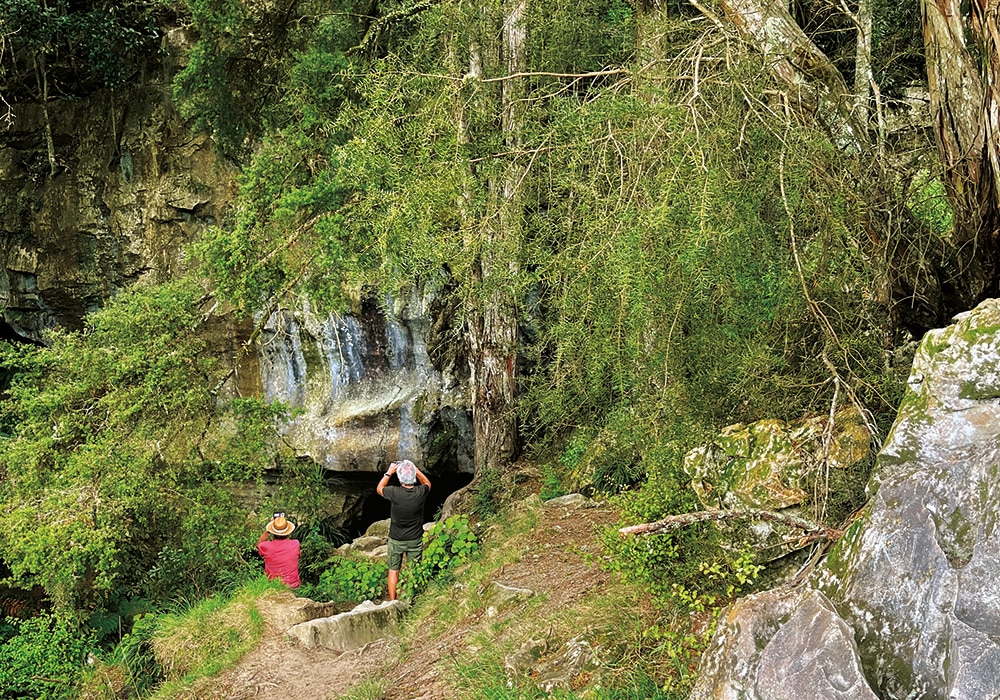THE BEST LAID PLANS
Changing intentions on a whim led Jill Malcolm to be captivated by the coast of Bream Bay.
You know how it is with RV travel – you can make a decision to go somewhere and then one thing leads to another and you end up where you never intended to be. Earlier in the year, we set out for Elliot Bay in the Far North. On the way, in need of a coffee break, we left SH1 to drive to Waipu.
Another reason to deviate was that I’d been enchanted by a photograph of a fairy tern, New Zealand’s rarest bird, which breeds along the Bream Bay coastline. It might be possible, I’d heard, to catch a glimpse of one at Johnston Point, near the river mouth just out of Waipu, which is part of the coast’s wetland sanctuary. I’d need some real magic to spot one of these dainty little sea birds with their mandarin-coloured beaks, as only 40 of them still exist.
The magic didn’t happen, although there was certainly much charm in the other birds we spotted during a 30-minute vigil. Close to Johnston Point is the Waipu Cemetery and, nosy as I always am, I went there to find the headstone that marks the earthly remains of Rev. Norman McLeod, the autocratic preacher who founded the village before departing this life in 1866. The estuary is a wild-looking place and I wondered how he and his band of followers might have viewed it when they arrived from Auckland in a schooner in 1854. This pondering led me to the local museum where Waipu’s curious beginnings are clearly documented.
In 1817, a group of men and women, fleeing the Highland Clearances, had set sail on a dodgy ship bound for Nova Scotia in the thrall of the autocratic Reverend McLeod, who in Scotland had dared to raise his voice against the Lairds and the church. They settled first in Pictou, Canada where McLeod so enraged local preachers that he thought it expedient to leave. He and his followers re-settled in St Ann’s Bay at Cape Breton and lived there until potato blight starved them out and forced them to travel on. And so they made the long journey to Australia, where some settled and others, including McLeod, crossed the Tasman Sea and found “eternal rest” in Waipu. It is a remarkable tale about an extraordinary man who was reviled by some, adored by others and who left an indelible exclamation mark on the history of New Zealand.
Given McLeod’s uncompromising sense of moral righteousness, I doubt he would have tolerated a dram of alcohol to cross the lips of his subjects, and he’d be spinning in his grave to know that in the middle of Waipu today is a brewery that carries his name. In 2003, two local men, the Gwynne brothers, bought a pizza business in an old building on Waipu’s main drag. Ten years later, pandering to their love of craft beer, they employed well-known brewer, Jason Bathgate, and began producing their own labels. They renamed this popular go-to venue McLeod’s Pizza Barn.
We were looking forward to seeing what McLeod’s had on offer, but sadly it was closed, so instead we crossed the road for coffee at Little Red, a cute little café with outdoor seating that has been set up in a shipping container. Here, I failed to resist a homemade cronut of immense proportions and couldn’t eat anything else for the rest of the day.
OVERNIGHTING IT
We should have been well on our way, but some RV friends, who were staying at Camp Waipu Cove, rang and invited us for a wee dram or three and a meal of the snapper they’d caught that morning. Naturally, this was also irresistible.
We were first timers in this camp, which stretches along the lip of the biscuit- coloured beach overlooking the Hen and Chicken Islands. Many generations of holidaymakers have spent their summers here. One man, a regular for the last 55 years, pointed to some of the images painted on the wall of an ablution block that he thought represented some of his family. Most ablution blocks in this colourful camp are decorated with murals. On one, I finally spotted a fairy tern and on others, a scene depicted campers at Waipu Cove in the 1930s, and the sailing ship Margaret, built in Nova Scotia by the McLeod’s community and sailed to Australia in 1851.
STRETCHING THE LEGS
For a good leg stretch the next morning, we walked the beach. The receding tide left a shimmering sheen across the wide stretch of sand and a pod of dolphins zipped through the surf, their flanks glistening like stainless steel.
We felt that we had earned our coffee at the Cove Café across the road from the camp. This is an excellent venue with great food and open-sided seating reminiscent of a Fijian bar. A man with sturdy legs and a long ponytail joined us to recount the walk he’d just finished along the Coastal Track from Waipu Cove to Langs Beach. “I’m not sure you’d like it,” he said, observing my unathletic bulk. ‘It’s steep and a hard, rocky clamber in places but worth it for the views and the pancake rocks halfway along.” He showed me photographs that clearly illustrated the track is made for the robustly fit.
By now, it was too late to travel far. We farewelled our friends and drove to Uretiti DOC Camp just up the road. This spacious area is an old favourite, set among pine trees and undulated sand hills adjacent to another long sweep of beach. Our neighbours were a couple of advanced age who came tottering along a path through the sand hills wrapped in towels and, as became apparent, nothing else. Their motorhome bore the logo ‘Barely Nomads’.
“There’s a nudist area 200m down the beach,” the lady told me. “One of the best.” Personally, I’m not one for frolicking about in my birthday suit, but she assured me that getting your gear off is liberating and relaxing. I’ll take her word for it.
WATERFRONT
By now our plan of travelling to the Far North was on hold. We spent another night next to the nudists (now fully clothed) who were lively company. The next morning, Bill and I walked north along the sand to reach The Bach Café on Ruakaka Beach. This is a popular place known for its fulsome breakfasts. As we baked in the sun, replete and sipping on a coffee, a shadow fell across the table. It was eerily coincidental that our friends, Ben and Alex, pitched up at this very moment – even more so that they were on an experimental weekend in a rental motorhome before deciding if they would buy one of their own.
They were staying at the Ruakaka Beach Holiday Park near the estuary. Of course, we joined them. We’d ignored this camp in the past because it’s one of the largest in New Zealand, and hobnobbing with fellow campers from the 334 sites had seemed formidable. And yet it is very well set out. Areas are on different levels and separated by hedges and trees.
We bagged a waterfront site overlooking the Ruakaka estuary, the wildlife sanctuary, and the jagged outline of Whangārei Heads. There’s swimming in the estuary at high tide but to get to Ruakaka Beach, It’s a ten-minute walk. There must have been hundreds of campers with us that night. And then, at our next night’s roosting place, we were almost alone.
We’d driven to Waipu Caves along an intriguing metal road to a small DOC camp, where a short walk led to a deep cave complex. I’m not an enthusiastic troglodyte and shortly in from the entrance I was even less enthusiastic about tackling the slippery mud banks and wading through an icy stream in the dark. Apparently, the caves are quite spectacular if you have the fortitude to clamber around in the gloom and squeeze through the tight spaces. But it pays to be young, fit, agile and armed with strong torches and gripping shoes. We made a timid foray and returned to the sunlight. But surrounding the caves is a bizarre landscape of massive karst/limestone outcrops that is just as interesting, and a walkway through rocks, bush and farmland which requires no courage at all.
Once the cavers and sightseers had departed, we had the place to ourselves. In the mesmerising twilight, a morepork’s cry cut the silence and later, moonlight cast light and shadow that brought the rocky shapes to life.
Around midnight we were woken by the crunch of tyres, and a battered station wagon pulled up nearby. We imagined a carload of armed terrorists but in the morning, the lone occupant turned out to be a pretty girl called Tula, dressed in balloon trousers and a well-worn T-shirt. Apart from a comfortable looking bed, the interior of her wagon was festooned with dream catchers, feathers, shells and rocks. She was a true nomad. “I love living like this,” she told me. “I pick up work when I need to but apart from that there is no pressure to be anywhere.”
“Don’t get ideas,” Bill said, giving me that ‘married’ look. “Today we are driving non-stop to Elliot Bay, no coffee stops along the way.” I smiled inwardly. Going anywhere is everything in an RV.



